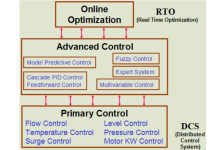Warehouse Control System vs Warehouse Management System: Different From Each Other?
Warehouse Management Software

Fulfillment and distribution centers are often part of a complex and critical network of logistics sites that circular products throughout the United States and all across the globe. Every warehouse management software and third-party logistic provider (3PL) should identify the appropriate mix of personnel, equipment, and systems to attain the most productivity from every location.
The formation of a controlled hierarchy that develops a sophisticated connection between warehouse platforms is the most common method to achieve a unified system. Warehouse platforms include warehouse control systems (WCS), warehouse management systems (WMS), and warehouse execution systems.
This article includes a brief introduction to warehouse platforms. Also, this article discusses how warehouse control systems and warehouse management systems differ from each other. You will find that most of them have overlapping functions as you keep on exploring this software as a service (SaaS) offerings. Such overlapping functionalities make the identification of the appropriate compilation for a particular operation even more complex and challenging. You will find a high degree of scalability and customization with increased support on cloud support and automation. It makes warehouse control systems (WCS) and warehouse management systems (WMS) accessible to small-scale warehouses, resulting in tremendous business growth.
There exist three major SaaS offerings within the warehouse space. The management of personnel, equipment, and order utilizes those SaaS offerings. Each type of warehouse platform has a specific core function for which it is known. Some warehouse managers might believe that a single platform can handle all of their requirements. Contrary to this, some managers might find that the combination of two or more warehouse platforms works for them. It depends on the needs of the warehouse and organization.
What is a Warehouse Control System (WCS)?
The WCS is configured only for a single warehouse, contrary to the warehouse management system that is used across various locations. The main purpose of the warehouse control system is the management of automated equipment on the warehouse floor. The warehouse control system is responsible for the management of carousels, packers, sorters, conveyors, and robotic systems.
Following are some features of the warehouse control system.
- Motion and In-line wight detection
- Machine control
- Real-time data visibility
- Scanner integration
- Reporting
What is a Warehouse Management System (WMS)?
The warehouse management system has been circulating for the past couple of years. Warehouse management systems are more mature in comparison to warehouse control systems or warehouse execution systems. The warehouse management system is responsible for handling, managing, and maintaining inventory flow control across numerous warehouses and distribution sites. The warehouse management system is often merged with enterprise resource planning software (ERP) for the coordination of inventory management at the corporate level.
Additional key features of the warehouse management system (WMS) are as follows:
- Shipping management
- Slotting
- ERP integration
- Creation of packing slips
- Completion of cycle counts
- Verification of receipts
- Inventory replenishment
Comparison Between WCS and WMS
Keep reading to have a deep dive into the key features of major warehouse platforms. It will help you understand how warehouse control systems and warehouse management systems are different from each other.
Level of Automation
The warehouse control system is usually combined with a warehouse management system to come up with the remarkable warehouse site management to control sales orders and inventory with corporate level controls. The warehouse control system is the best method to manage and coordinate the local equipment if a warehouse uses a complex rack design and an immense amount of automated devices.
Unfortunately, warehouse management systems do not manage warehouse material handling equipment effectively. It proves to be a big gap between both warehouse control systems and warehouse management systems. It also leads to the fact that the warehouse control system fulfills the business requirements of the present modern era effectively and efficiently.
Operational Complexities
One of the major differences between warehouse control systems and warehouse management systems is their capability to handle numerous locations. Most of the warehouse management systems support numerous locations and different operational requirements across sites as it is designed at the enterprise level, including third-party logistics (3PL) providers. The warehouse management system maintains visibility at a higher level, but unfortunately, the data often lags.
On the other hand, the warehouse control system does not provide data lagging. Warehouse control systems handle complex warehouse operations and provide better control at a site level. A vast range of warehouse managers utilizes both warehouse control systems and warehouse management systems for the enhancement of warehouse operations.
Customization of Future Requirements
Warehouse management systems come with a comprehensive set of capabilities in comparison to warehouse control systems or warehouse execution systems. This makes the warehouse management system more rigid and complex to scale and customize. It’s crucial to understand the present and future requirements of the warehouse, large-scale organizations, and network of logistics partners before choosing a combination of warehouse management software.
Creation of slant deployment where warehouse execution system and warehouse control system are sufficient to circulate totes, pallets, and products effectively is possible.
Conclusion
As numerous types of material handling technology and software exist, there is no one-size-fits-all. There is no clear choice to optimize the warehouse that will meet all the crucial requirements of every organization. It is possible to develop a winning plan for any warehouse with a critical overview of automation requirements, inventory management, and data tracking.
Businesses should choose such a solution for themselves that provides both warehouse control systems and warehouse management systems. System types have proven their value for operations worldwide. MWI Solutions is the most optimal solution for your business because it provides a broad range of optimistic services. The services of MWI Solutions include strategy development, electrical panel fabrication, material handling automation, facility planning, operations assessment, and warehouse management systems. The warehouse control system (WCS) software of MWI Solutions called InterSort has been installed and proven in numerous applications.
InterSort provides a modular approach to solve complex problems. Moreover, InterSort provides a customer host interface, data collection, labeling, sortation, order fulfillment, reporting, and much more.
So, why are you waiting? Stop wasting your precious time and head over to the official website of MWI Solutions today!



